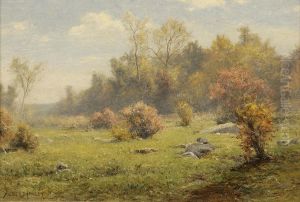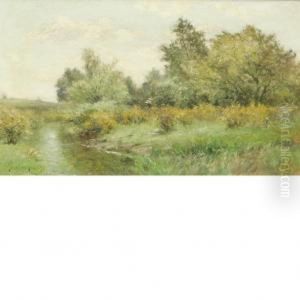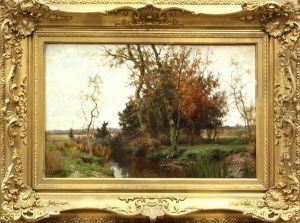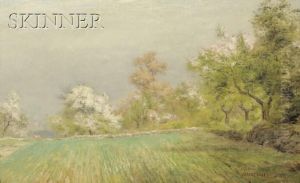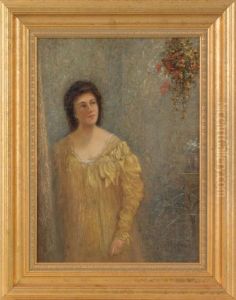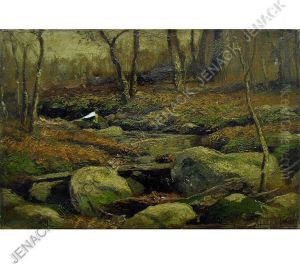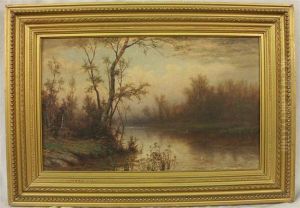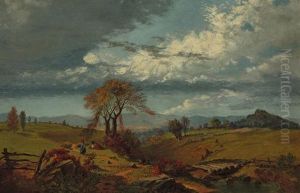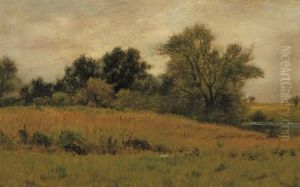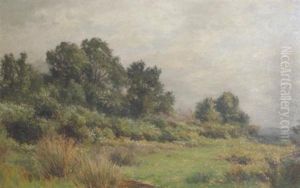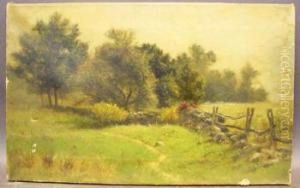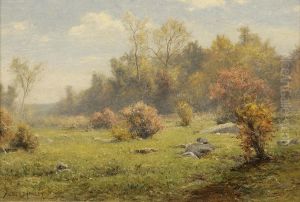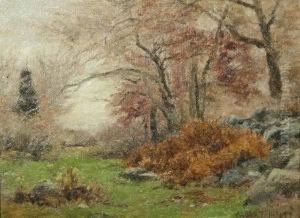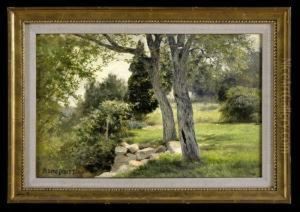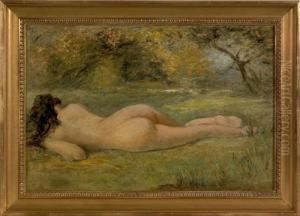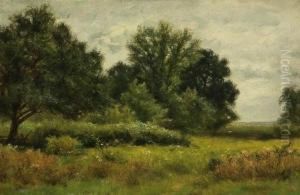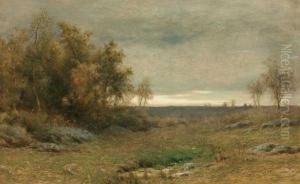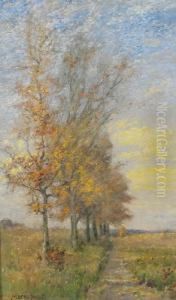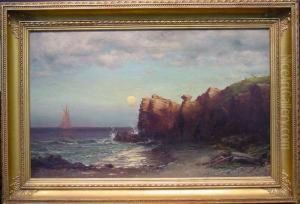Albert B. Insley Paintings
Albert B. Insley was an American landscape painter known for his meticulous and atmospheric depictions of the American wilderness. Born in 1842, Insley spent his formative years in New York City. He developed an early interest in art and pursued his artistic education at the National Academy of Design. He also studied under the guidance of the renowned Hudson River School painter James M. Hart, which deeply influenced his style and preference for landscape subjects.
During his career, Insley became associated with the second generation of Hudson River School artists. He was celebrated for his ability to capture the natural beauty of the American landscape with a particular focus on the effects of light and atmosphere. His works were characterized by their detailed rendering and serene quality, often evoking a sense of tranquility and reverence for nature.
Insley exhibited his work at various prestigious institutions, including the National Academy of Design and the Brooklyn Art Association. His paintings were well received, and he gained a respectable following among art collectors and enthusiasts of the time.
Despite his success, Insley remained relatively modest in his lifestyle and dedicated to his craft. He traveled extensively within the United States to find inspiration for his works, often venturing into the wilderness to paint en plein air, a practice that allowed him to capture the subtle nuances of the landscape.
Insley's contributions to American landscape painting were significant, and his works continue to be appreciated for their beauty and historical value. After a long and productive career, Albert B. Insley passed away in 1937, leaving behind a legacy of stunning landscapes that continue to be studied and admired by art historians and lovers of the Hudson River School aesthetic.
